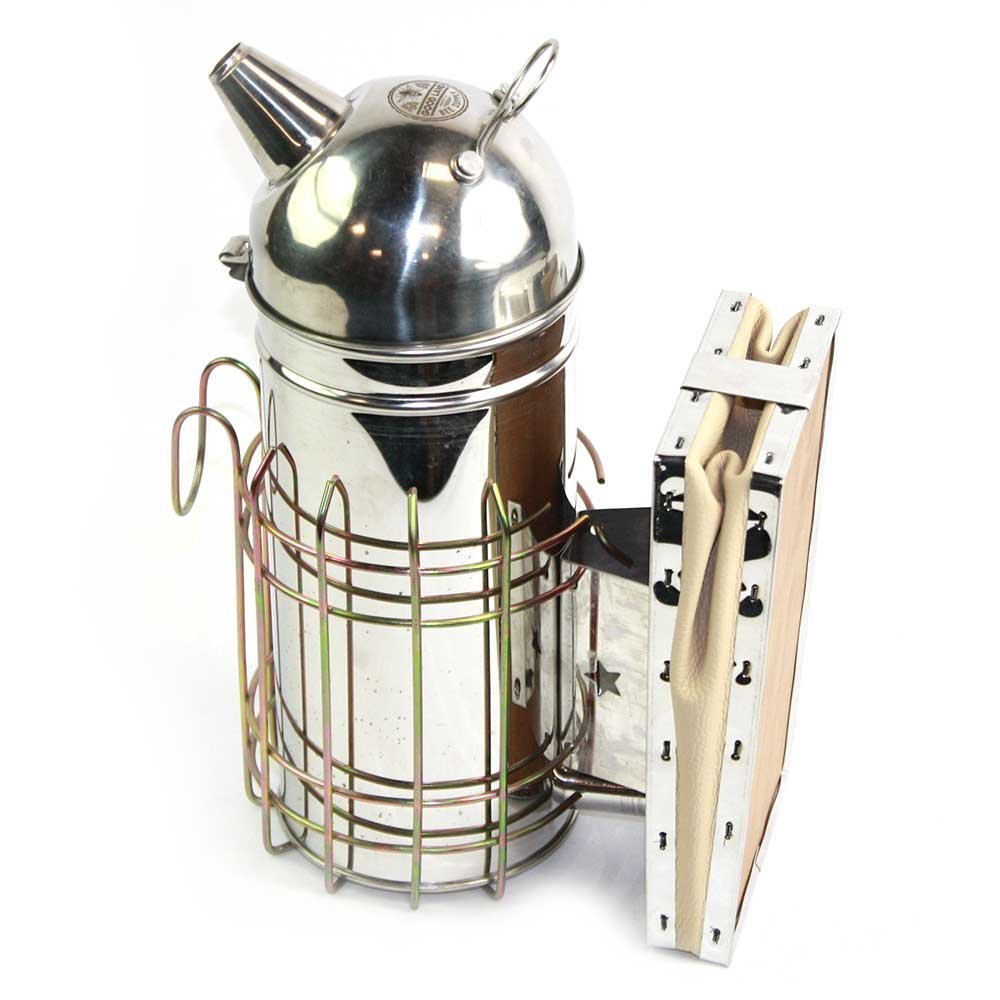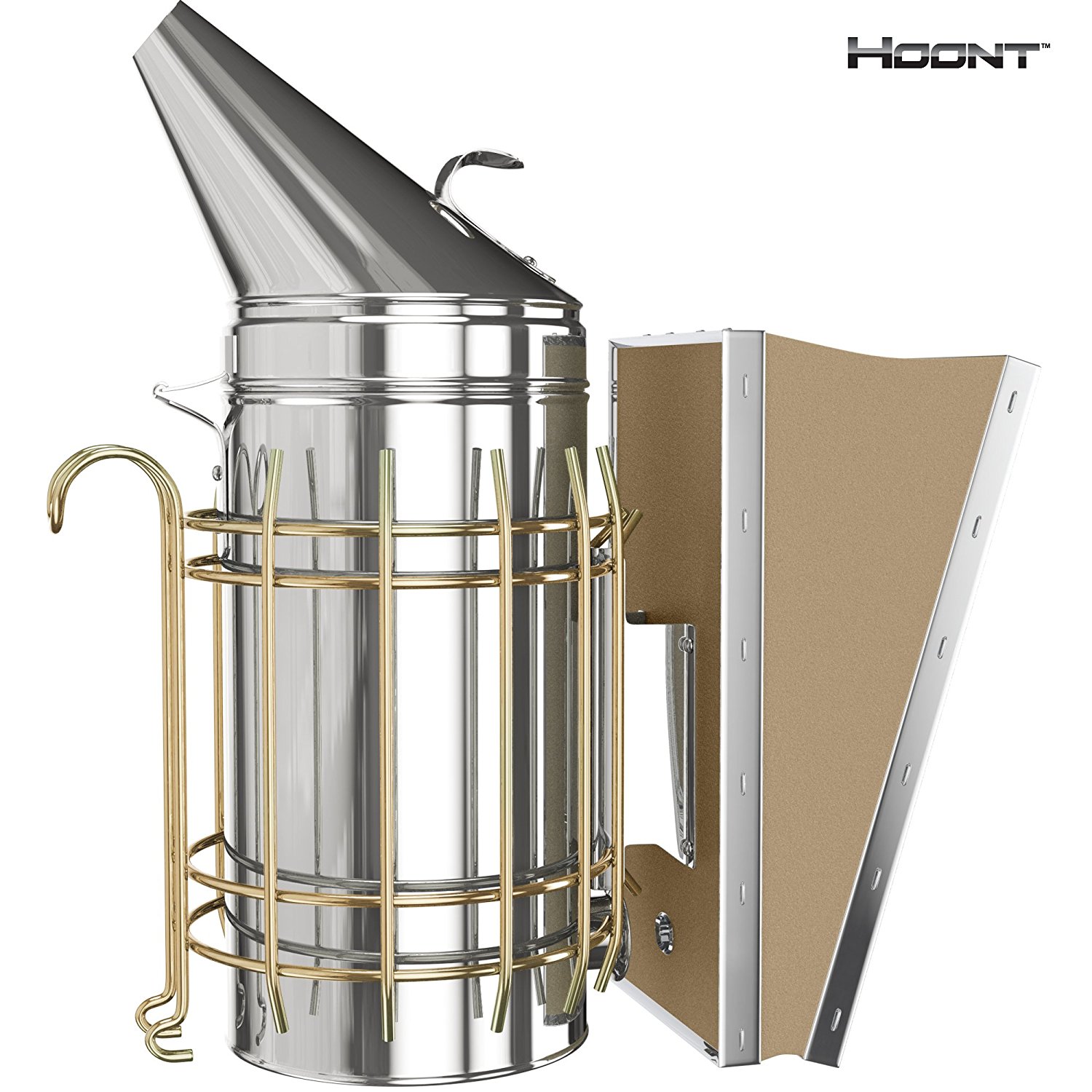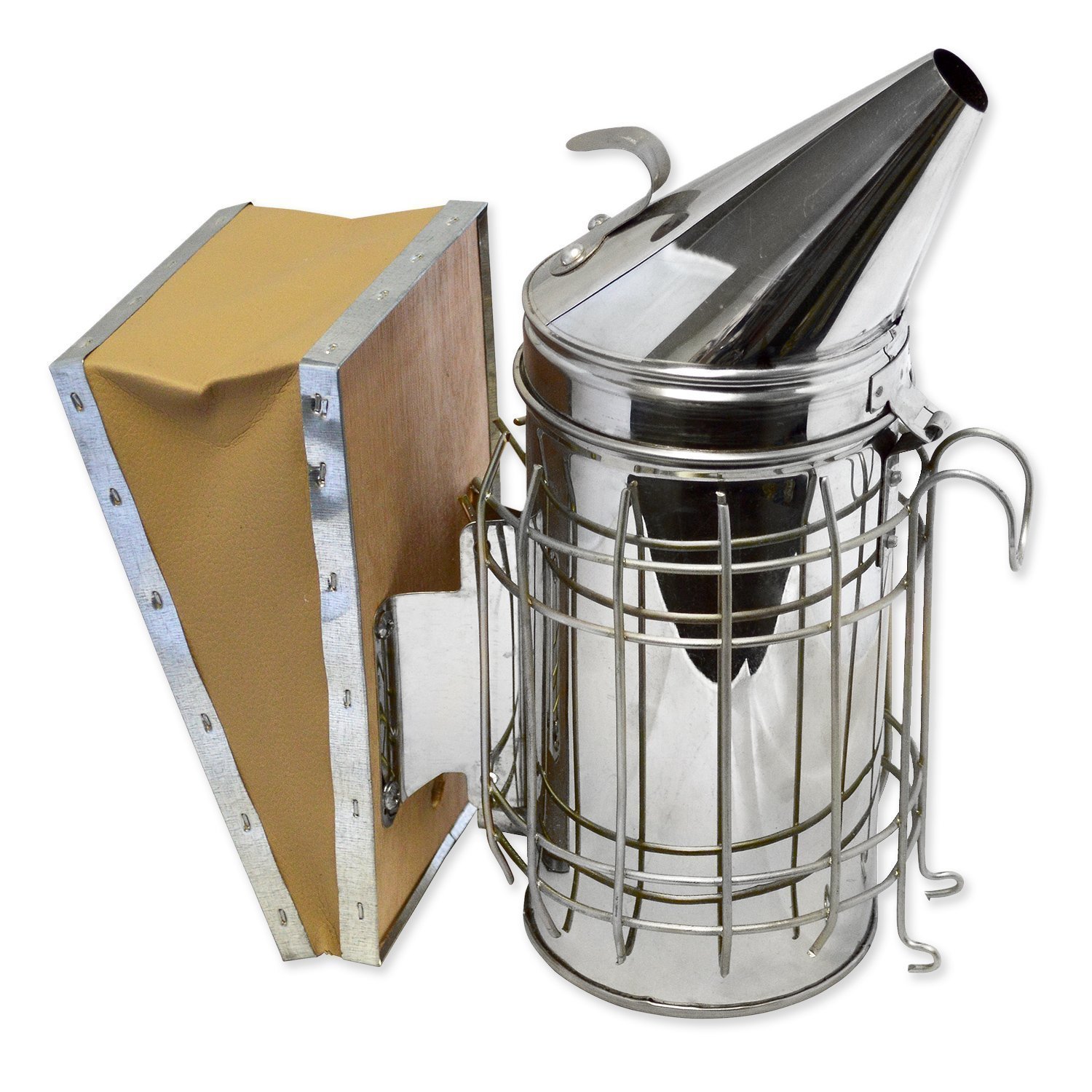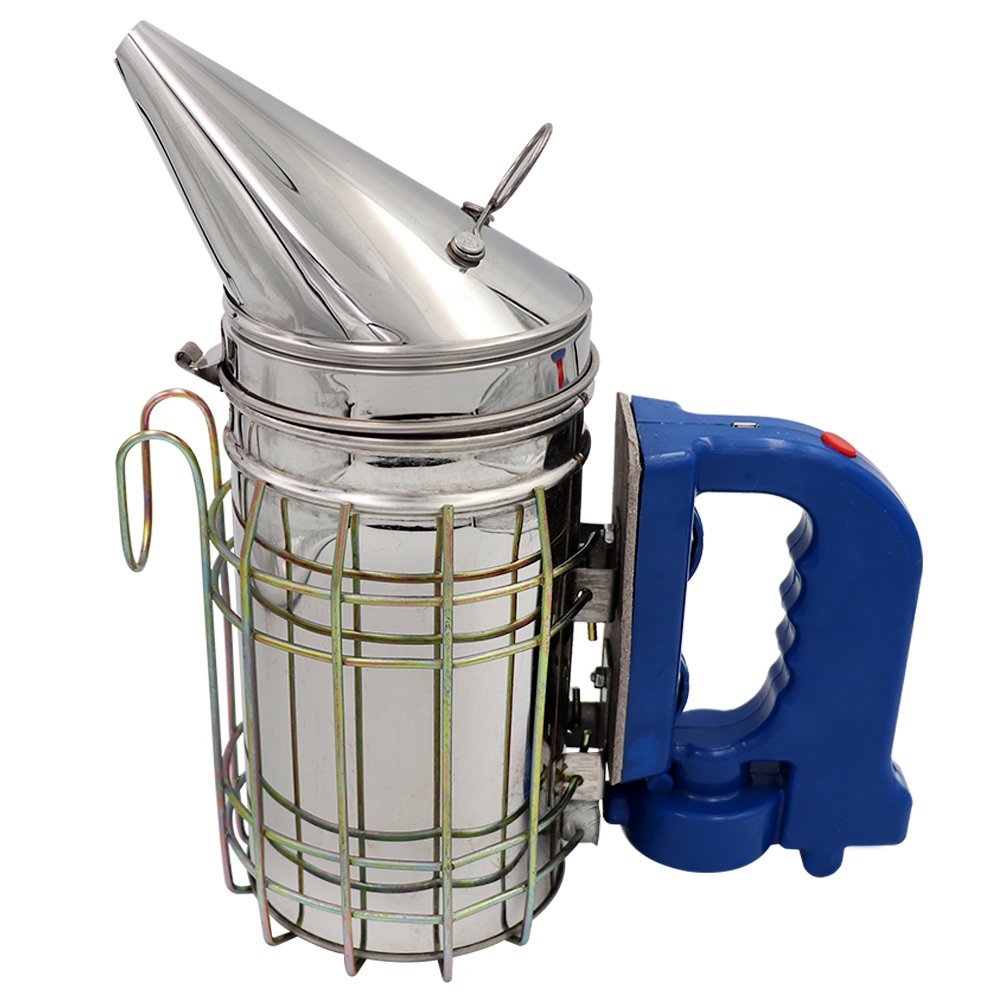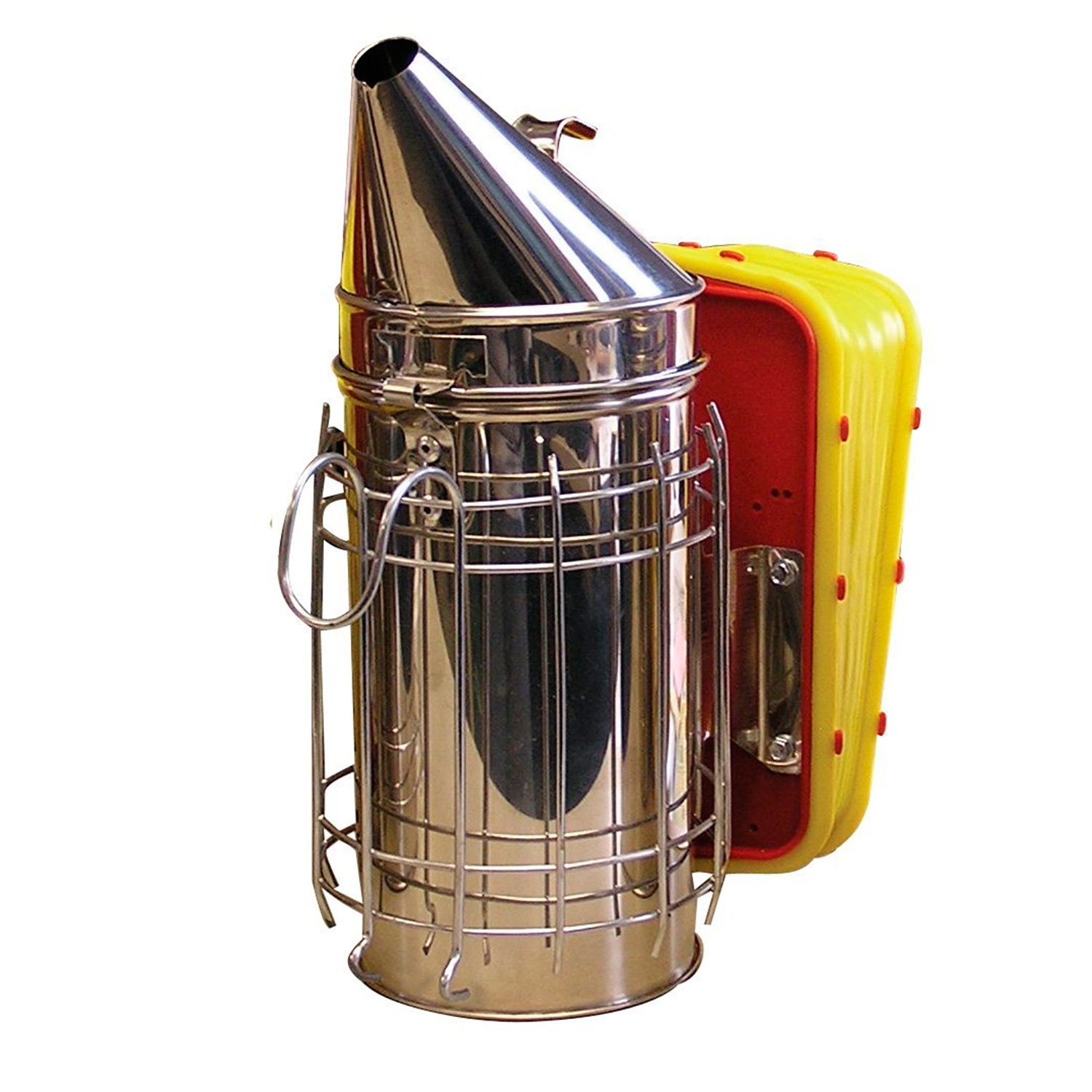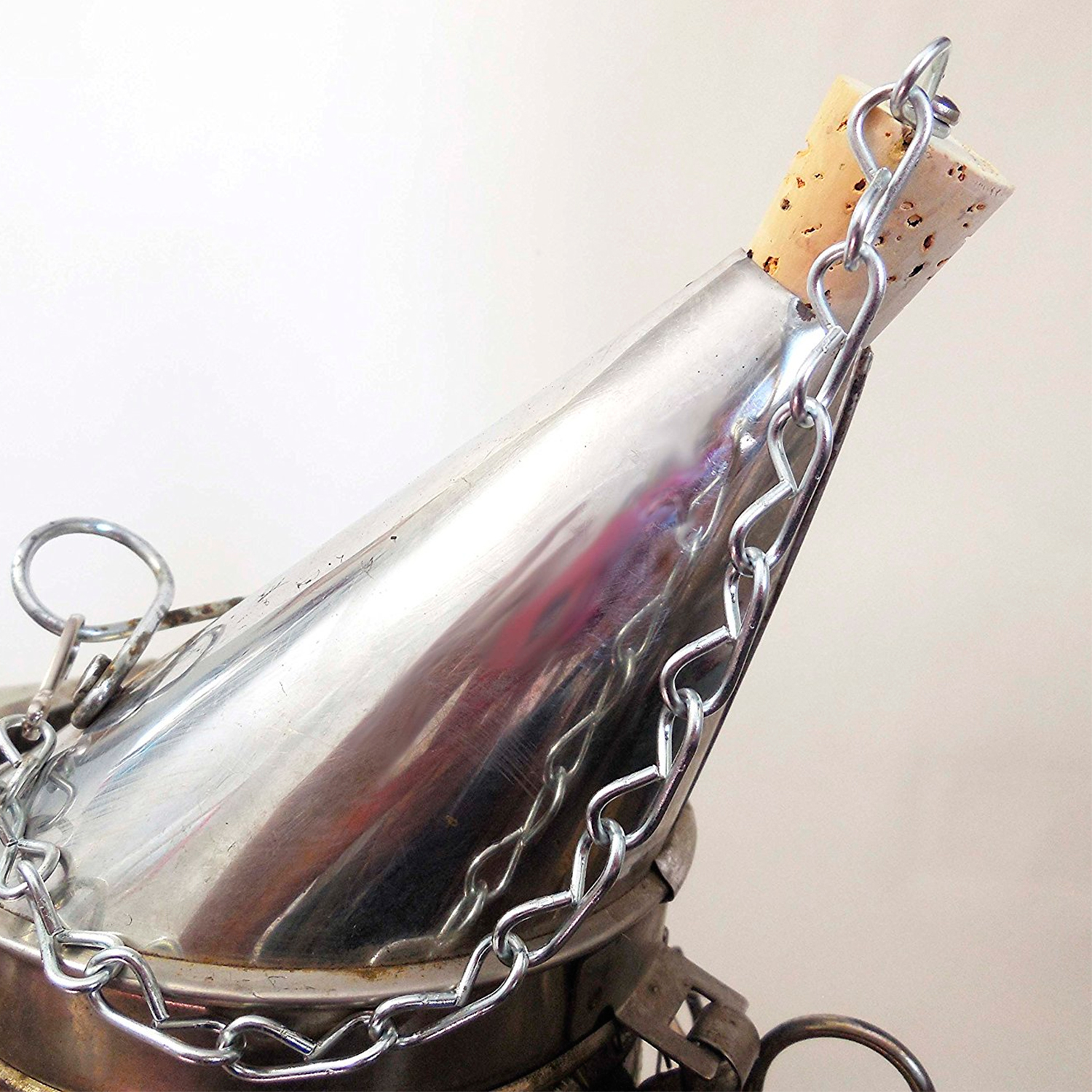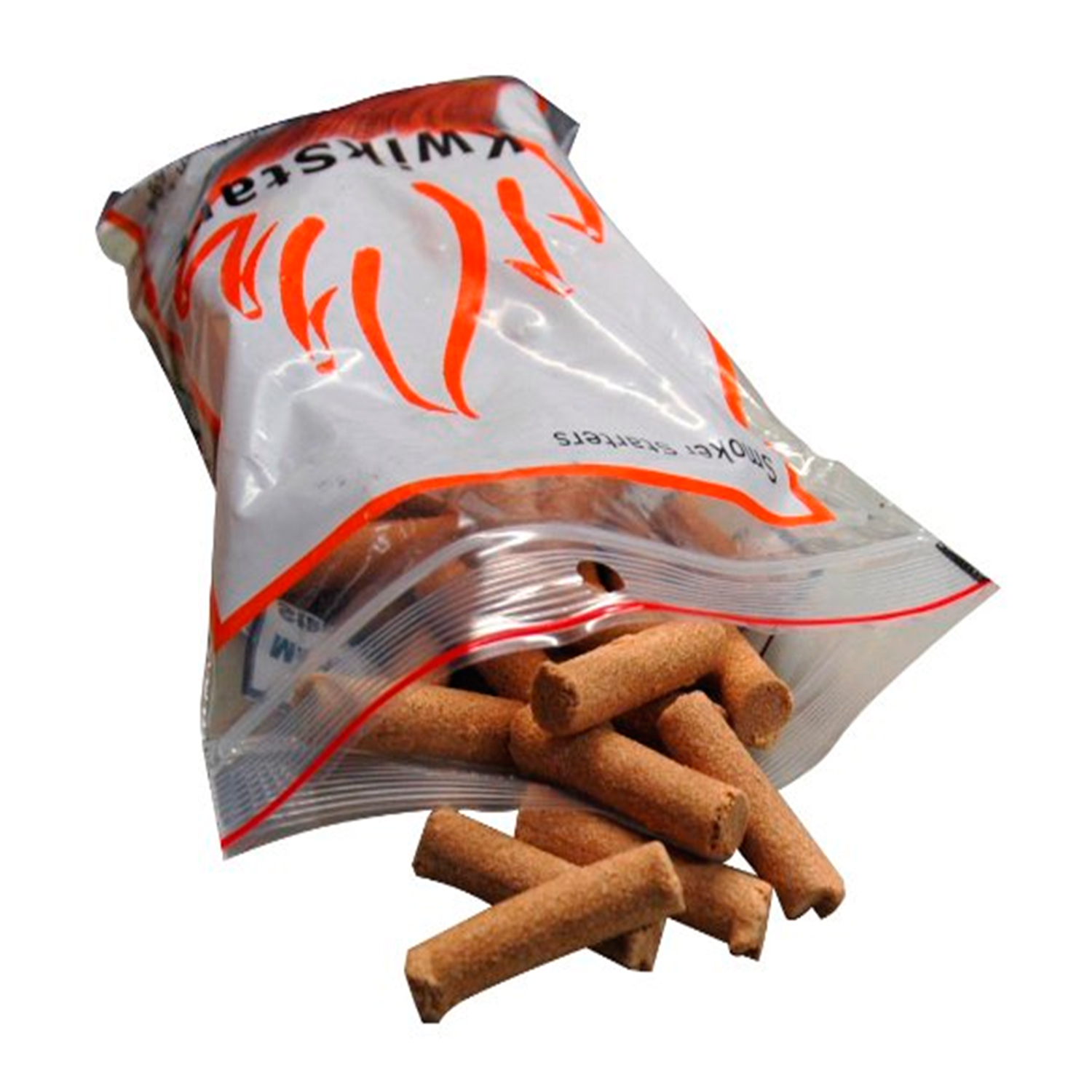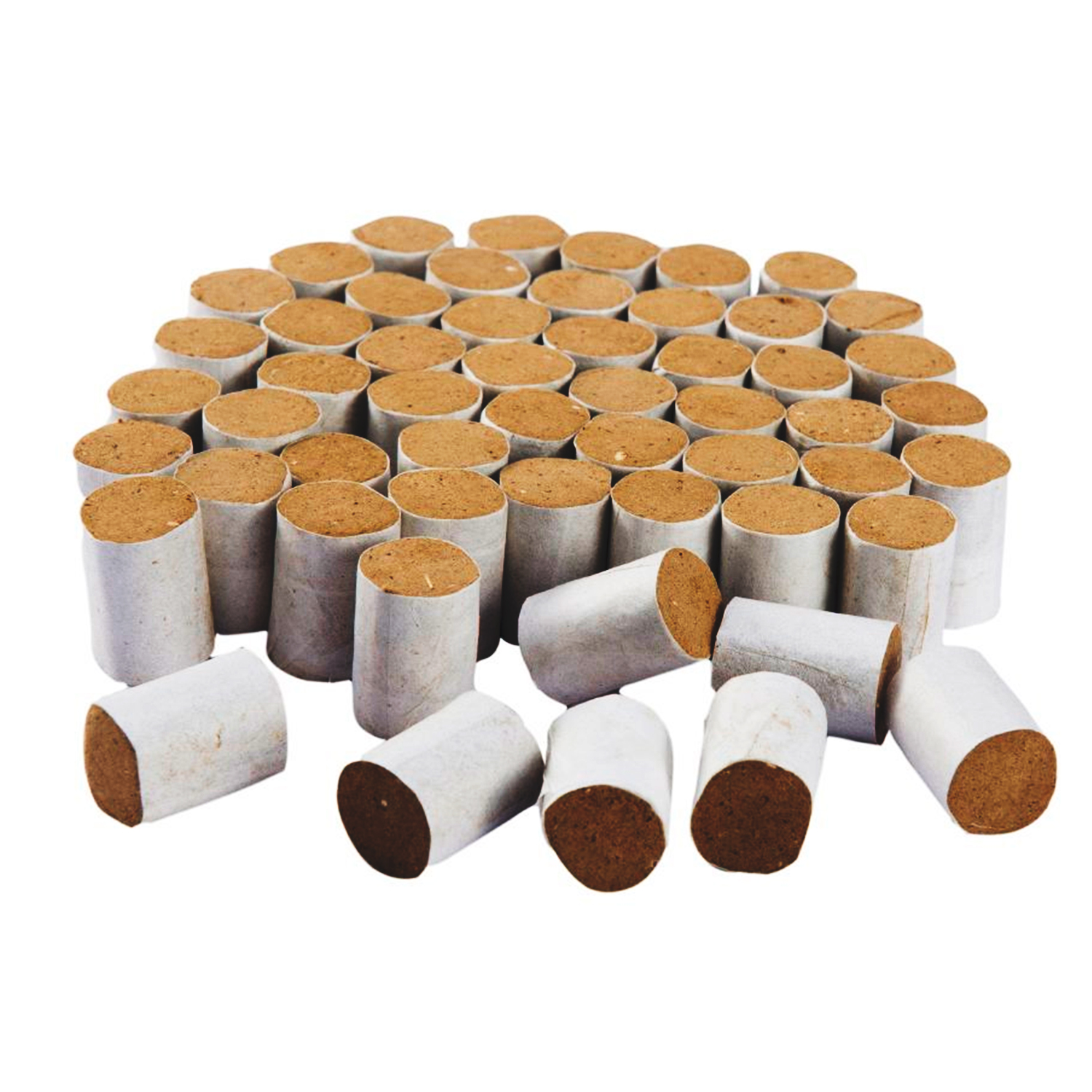Bee smoker is the first tool after bee hive that you need from beekeeping tools and equipment.
Smoker is going to be one of the most important tools you’re going to need.
Honey bees communicate with pheromones. One of these pheromones is an alarm pheromone. They use this pheromone when they feel threatened. So when the beekeeper goes to open the hive the bees feel threatened and going to release this pheromone within the hive. This causes them to attack. If the beekeeper has the smoker he’s gonna apply a couple puffs of smoke in the entrance of the hive and let that work up. That’s gonna cover these pheromones. When you get into the hive you will notice that the bees have their heads buried deep within the cells of the honeycomb and they are eating. Bees believe that the hive is on fire so in their mind they’re going to take as much honey that they can with them. When they go to pour out that hive due to this fire. So as the beekeeper you need to learn how is not over smoking and figure out just how much it takes. That’s going to take a little bit of practice and get to know the temperament of your bees. So you can see why this is a very important tool. When you go to buy your bee equipment this is one tool I would not get cheap on. Buy yourself a good one.
Bee Smoker parts
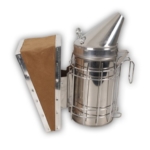 Heavy Duty Stainless Steel Bee Smoker Check Price | 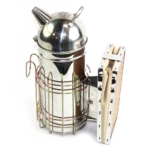 Stainless Steel Bee Hive Smoker with Fuel Check Price | 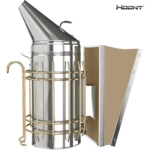 Stainless Steel Beekeeping Smoker Check Price | 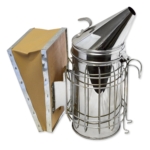 Heavy Duty Stainless Steel Bee Smoker Check Price | 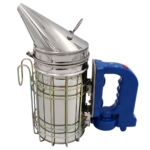 Check Price | 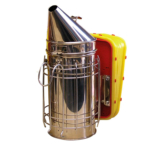 Stainless Steel Bee Smoker with Pro-Bellow Check Price |
|
| Size | 4x7 inches | 4x11 inches | 4x11 inches | 4x11 inches | 4x11 inches | 4x7 inches |
| Volume | 352 inches3 | 553 inches3 | 553 inches3 | 553 inches3 | 553 inches3 | 352 inches3 |
| Bellow Material | Leather | Leather | Vinyl | Leather | No Bellow | Rubber |
| Breather Plate | Yes | Yes | No | Yes | Yes | No |
| Bottom Bracket | Yes | Best | Yes | Yes | best | Yes |
| Hanger Type | Double loop | Loop | Hook | Hook | Loop | Hook |

Bee Smoker comparison
I also recommend:
Leather Protector
Prolong the service life not only rubber and leather bellows, but also can be used for cleaning beekeeping gloves
What bee smoker fuel to choose?
I really like pine needles. They smell pretty good when they’re burning and I usually keep a bag of these in a greenhouse which keeps them nice and dry. If your fuel is damp, you’re going to constantly have trouble keeping this thing lit. There are also commercial smoker fuels like compressed cotton pellets. They work fine. They don’t smell as nice as pine needles, but there’s a host of fuels. As for me, best bee smoker fuel is the one from Mann Lake – start fast, lit long, no need to use additional materials. But anyway you can use a lot of different natural materials, wood pellets, all kinds of things.
How to light bee smoker?
I start with a little fuel in the bottom and I light that fuel and I want to puff that until I see flames coming up. Get that burning really well and then I’ll lightly stuff a little more on top. Now we’re starting to get smoke. I’m using the bellows to get that burning. Our goal is to have the ember in the bottom. That’s where our heat is and then a smoldering fire down there. Then as the smoke filters through all this fuel, it cools. It has time to cool. We don’t want to be blowing hot, fiery smoke on our bees. We want cool smoke. So as that gets burning I add more fuel, and this thick, white smoke is what we’re after. This is what’s really going to help us work our bees. So I pack that down, give it a few more puffs. When you initially light it, a lot of times folks put fuel in too quickly and they put the smoker out, so make sure you continue to get that nice thick, white smoke coming and once I feel like I’ve really got it burning good in the bottom, I’ll go ahead and pile in a nice big handful, pack it down.
Sometimes I’m working bees for several hours so I want a lot of fuel in there. So now we’ve got our heat in the bottom, and you can test that smoke on your hand. It’s very cool. We don’t want to be throwing flames and sparks on your bees, burning their wings and such. They won’t appreciate that very much. We just clouded up a little bit but if there’s thunder in the distance sometimes bees react to that. They’ll be more aggressive and more sensitive. They’re very sensitive the barometric pressure so they know when the storm’s coming way before we do and you’ll watch like… I might not have any sense that there’s a storm and there will be large numbers of bees coming back to the hive and very few leaving and then 15-20 minutes later, a big cloud comes over the mountain, starts rumbling, the bees knew that way before I did because they sense that change in barometric pressure… Pretty cool stuff but they’re also a little more potentially aggressive when there’s an approaching storm.
Also, you know, during the middle of the day when its hottest might not be when you want to get in your bees but you want to get in your bees during that time a day because most of the foragers are out in the field. The foragers are your old, grouchy bees, so the less of those that are available in the hive, the easier time you’re going have worked your hive. If you get in there at the crack of dawn when everybody’s home, you have a lot more bees to get upset at you. Same thing if you wait till near dark you have a lot more trouble too so when the peak foraging time is, say between 10 a.m. and 4-5 p.m. is the best opportunity to get in the bees. You’re working with their time schedule a little better that way.
In the end I want to say just a couple of words. Remember, even the best bee smoker does not replace intuition and experience. If you are getting started beekeeping – learn your bees: it’s main rule. Wish you successful inspections!

